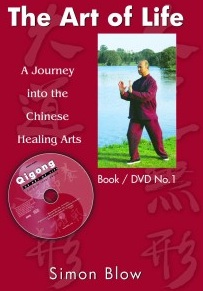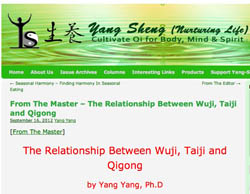Fundamentals of Practicing Qigong
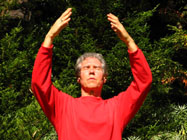
"Qigong is not exercise -- it is dynamic meditation. Doing repetitions is not the focus - it is conscious application of the three intentful corrections - lengthen the spine, deepen the breath, clear the mind or visualize healing." Dr. Roger Jahnke, OMD.
The three foundations of Qigong practice are the combination of posture and movement, breath, and mindfulness and meditation practiced together as a unity.
The Three Intentful Corrections
The first intentful correction (i.e. mindful adjustment) involves body posture. Incorrect posture results in decreased or blocked energy flow, the unnecessary expenditure of energy, a decrease in stamina, and greater susceptibility to injury or illness. An excellent text on posture and balance that can have a dramatic effect upon your health, all by itself, is Ageless Spine, Lasting Health: The Open Secret to Pain-Free Living and Comfortable Aging
Ageless Spine, Lasting Health: The Open Secret to Pain-Free Living and Comfortable Aging . Doing moving forms of Qigong is a particularly appropriate way to train for sports like climbing because you must adjust and be totally aware of your weight distribution, balance, and posture as you make each move.
. Doing moving forms of Qigong is a particularly appropriate way to train for sports like climbing because you must adjust and be totally aware of your weight distribution, balance, and posture as you make each move.
The second intentful correction involves breathing. In spite of years or decades of practice, most of us breathe in a non-optimal way: On the in-breath, our chest fills up with air and little air gets into the abdomen. Interestingly, we all came into the world knowing and practicing the right way to breathe; we had to learn the wrong way through the experience and conditioning of growing up. The form of breathing most used with Qigong is abdominal breathing, where on inhale the lower abdomen expands and fills with air before the chest, and the abdomen contracts on exhale. Tai Chi & Chi Kung Breathing Tutorial - from World Tai Chi & Qigong Day.

 The third intentful correction involves mental state or awareness. Regulating your mind is a practice designed to reduce stress and increase your awareness of the moment, helping you to achieve a state of pure consciousness by stripping away thoughts and emotions that keep you unnecessarily immersed in the complexity of your daily life. Qigong meditative techniques, such as mindfulness meditation, are combined with slow, deep breathing and gentle movement. Start your Qigong practice using any meditative technique with which you are familiar. Three Intentful Corrections are explained in detail in Jahnke's The Healing Promise of Qi: Creating Extraordinary Wellness Through Qigong and Tai Chi
The third intentful correction involves mental state or awareness. Regulating your mind is a practice designed to reduce stress and increase your awareness of the moment, helping you to achieve a state of pure consciousness by stripping away thoughts and emotions that keep you unnecessarily immersed in the complexity of your daily life. Qigong meditative techniques, such as mindfulness meditation, are combined with slow, deep breathing and gentle movement. Start your Qigong practice using any meditative technique with which you are familiar. Three Intentful Corrections are explained in detail in Jahnke's The Healing Promise of Qi: Creating Extraordinary Wellness Through Qigong and Tai Chi .
.
It is Qigong’s gentle movement that demands more oxygen in the system and helps regulate the body's critical oxygen/carbon dioxide balance. Slow, deep breathing dilates the blood vessels so that the heart doesn’t have to work as hard. Besides muscle contraction, the main way to enhance the functioning of your lymph system is through breathing. The lungs have been called the heart for the lymph system, which is key to your body’s immune function as well as removal of toxic metabolic by-products from your cells. Your body goes into a waking regeneration mode during Qigong practice as your nervous system switches from the overactive sympathetic mode to the restorative parasympathetic mode, with an immediate calming effect and an astonishing increase in focused awareness and effective performance. Note that when you are dreaming, even though you are not awake, your nervous system is still engaged and not in the restorative state.
As with all Qigong, use slow deep abdominal breathing, a relaxed posture, and alert but focused on nothing in the mind. No thoughts. This has been described as "cheerful indifference". All of these movements can be modified for practice sitting in a chair, lying on the floor, or in a hospital bed. Remember, with Qigong, “Pain is no gain”. Note that there are thousands of different types of Qigong. Enjoy, experiment with, and discover new forms and adapt them to your personal practice. Figure out what works best for you. Remember to breathe.




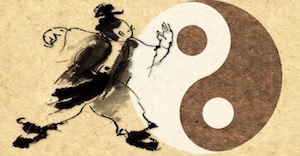


 Meditative Movement as a Category of Exercise: Implications for Research
Meditative Movement as a Category of Exercise: Implications for Research
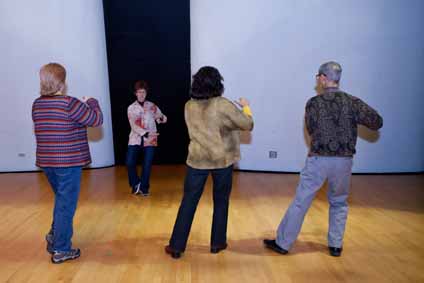
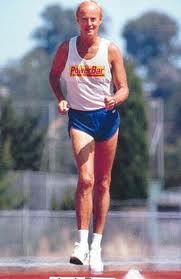 "As the world’s fastest racewalking gerontologist, I have discovered that blending Qigong movement and exercise has helped me stay healthy and maintain my world class ranking in my age group. Making new and beneficial Qigong walking exercises can be interesting and enjoyable; it is a challenge to creative people. Racewalking and Qigong walking have helped develop my own excellence in exercise and in life. There are many studies that have discussed the various aspects of walking that enhance health, energy and life."Jack Bray.
"As the world’s fastest racewalking gerontologist, I have discovered that blending Qigong movement and exercise has helped me stay healthy and maintain my world class ranking in my age group. Making new and beneficial Qigong walking exercises can be interesting and enjoyable; it is a challenge to creative people. Racewalking and Qigong walking have helped develop my own excellence in exercise and in life. There are many studies that have discussed the various aspects of walking that enhance health, energy and life."Jack Bray.